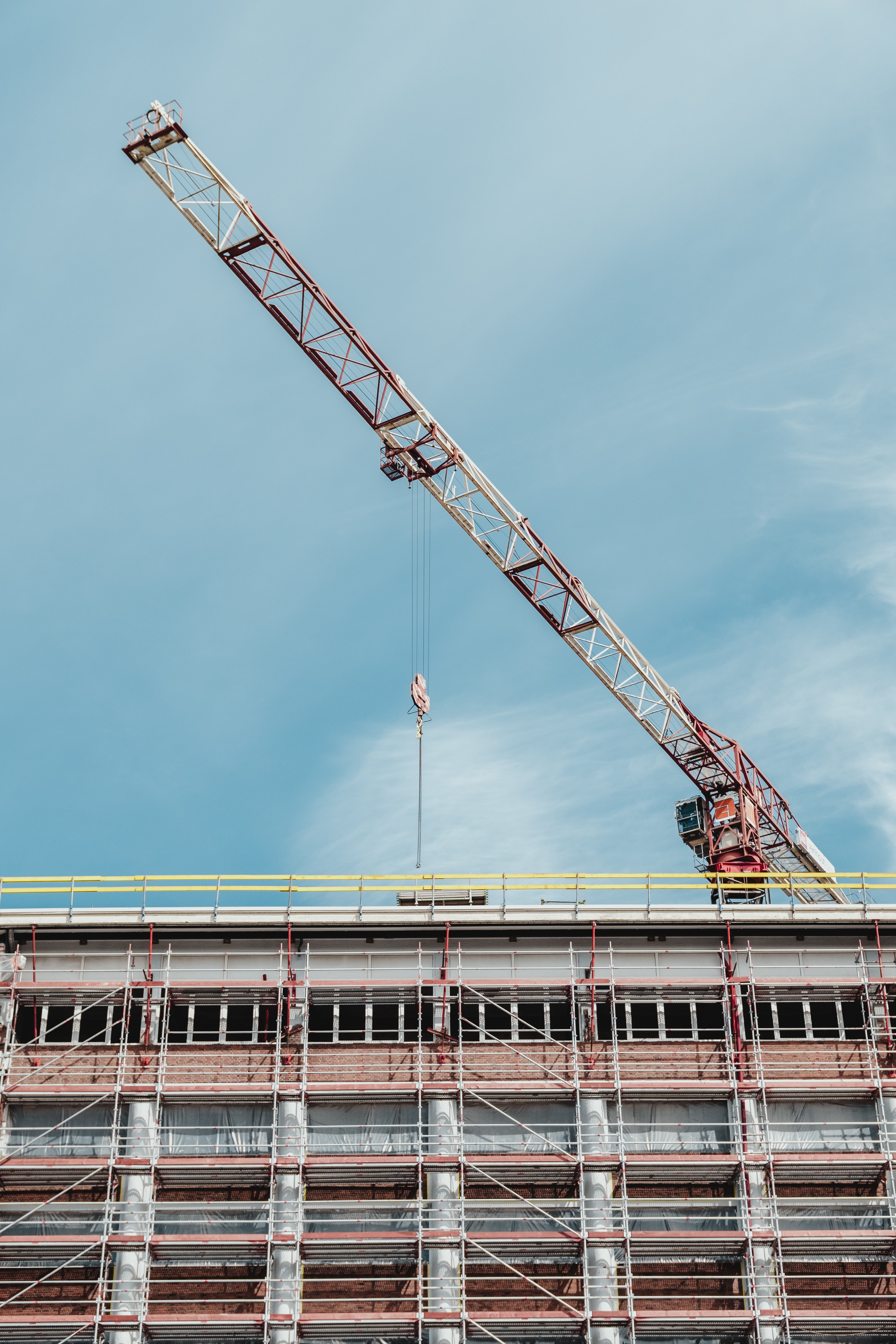The Evolving Importance of Health Care Resiliency
Learning Objectives:
- Describe the four key areas of mechanical, electrical, and plumbing design necessary to maximize health care resilience during a natural disaster.
- Identify the four commonly accepted characteristics of infrastructure resiliency, as defined by the National infrastructure Advisory Council.
- Introduce the principles of crime prevention through environmental design (CPTED).
- Discover the pros and cons of utilizing the Internet of Buildings as a design tool.
- Familiarize yourself with the design principles regarding electrical systems in critical facilities.
Credits:
As an IACET Accredited Provider, BNP Media offers IACET CEUs for its learning events that comply with the ANSI/IACET Continuing Education and Training Standard.
This course may qualify for continuing education through the FBPE.
This course may qualify for continuing education through the NYSED. For further information, please visit the NYSED website at http://www.op.nysed.gov/prof/pels/peceques.htm.
Purpose statement:
The purpose of this course is to better equip engineers to answer the call of their communities during dire situations, such as natural disasters, power outages, water shortages, and infrastructure failures, by taking proactive steps and making concrete plans to further the disaster preparedness of a health care facility or system.PREPARING YOUR HOSPITAL FOR A CRISIS
Resilience in health care can only be served if a hospital is prepared to face the worst. By taking proactive steps and making concrete plans to further the disaster preparedness of a health care facility or system, engineers will be better equipped to answer the call of their communities during dire situations.
In addition to being resilient to natural disasters, hospitals also must be prepared for other disruptions, such as power outages, water shortages, or infrastructure failures — all of which impair their ability to provide lifesaving care to their vulnerable patient population. Without a clear plan and definitive course of action in place ahead of time, a hospital could be left scrambling to recover, putting patients and staff at risk and leaving the designer liable.
Without a doubt, establishing a disaster-resilient health care institution is becoming an exceedingly more complex problem. Even hospitals that feel confident in the resiliency of their buildings and contingency plans may find gaps and inconsistencies with the reality of today’s changing world. Natural disasters like the 2011 tornado in Joplin, Missouri, the wildfires in California and the flooding from Hurricane Sandy in 2012 have always been a risk. However, due to the changing planet, the frequency and severity of these events is increasing.

Image courtesy of Camilo jimenez on Unsplash
FIGURE 1: Even hospitals that feel confident in the resiliency of their buildings and contingency plans may find gaps and inconsistencies with the reality of today’s changing world.
Beyond natural disasters, hospitals also need to plan for how they would respond to catastrophes, such as an active shooter or other mass casualty events. Other risks include an infectious disease outbreak that could cripple a region and induce panic or a cyber-attack, which could lead to financial loss or a breach in patient privacy.
With such a broad range of threats that can occur, how can you ensure a hospital is adequately prepared? Further, assuming the requirements for health care resiliency will continue to evolve, how can one ensure a hospital remains adequately prepared?
Answering these questions first requires an understanding of four commonly accepted characteristics of infrastructure resiliency, as defined in 2009 by the National Infrastructure Advisory Council:
- Robustness: The ability to maintain critical operations and functions in the face of crisis. This includes the building itself, the design of the infrastructure (office buildings, power generation, distribution structures, bridges, dams, levees, etc.), and in system redundancy and substitutions (transportation, power grid, communications networks).
- Resourcefulness: The ability to skillfully prepare for, respond to, and manage a crisis or disruption as it unfolds. This includes identifying courses of action and business continuity planning, training, supply chain management, prioritizing actions to control and mitigate damage, and effectively communicating decisions.
- Rapid recovery: The ability to return to or reconstitute normal operations as quickly and efficiently as possible after a disruption. Components of rapid recovery include carefully drafted contingency plans, competent emergency operations, and the means to get the right people and resources to the right place.
- Redundancy: Having backup resources to support the originals in case of failure.
Using these traits as a benchmark, one can begin to take an informed look at the main resiliency issues facing a health care facility:
- Structural integrity;
- Mechanical, electrical, and plumbing (MEP) infrastructure;
- Physical security;
- Mass casualty events and infectious outbreaks; and
- Cybersecurity.
DEFINING A HOSPITAL’S STRUCTURAL INTEGRITY
When natural disasters strike, hospitals and health care systems are on the front line of ensuring community safety and resiliency. However, this purpose can only be served if a hospital is prepared to face the worst. Natural disasters may be unstoppable, but that doesn’t mean a hospital can’t take intentional and necessary steps to lessen their impact. While the specific natural disasters one should be concerned about — and many of the specific actions an engineer should take in response — depend on geographic location. Remember, there’s no such thing as being too prepared.

Image courtesy of Bernard Hermant-Unsplash
FIGURE 2: Natural disasters may be unstoppable, but that doesn’t mean a hospital can’t take intentional and necessary steps to lessen their impact.
While the structural and architectural design of a building doesn’t necessarily need to address every potential natural disaster, it should be able to withstand common events for a specific area as well as potentially devastating, but unlikely chance occurrences, such as fire. In addition to establishing procedures and educating staff on hospital policies in the event of these disasters, one should consider these questions:
- Do those involved want the hospital to be a community beacon?
Assuming the hospital makes it through whatever disaster befalls the community, those involved will need to consider whether they want the hospital to become a community beacon – a place where communities often turn for safety and as a gathering place amid chaos and tragedy. It’s not uncommon for people with nowhere else to go during a disaster to go to a hospital, even if they don’t need medical care.
If the hospital could potentially serve this purpose, procedures will need to be enacted to ensure it is prepared to do so. First and foremost, is the designation of a disaster response area — ideally one that is hardened against potential disaster effects and prepared to take on an influx of people. - Does the physical design of your building pose any challenges?
Consider how the layout of a building would function in a disaster. For instance, are emergency generators or backup fuel pumps in the basement? If so, this could leave a hospital without these critical systems in the event of a power outage if the basement experiences flooding. Also, consider the locations of the emergency exit stairwells in the building. Ideally, they should discharge into remote areas of the hospital that aren’t at high risk for damage or physical attack. In order to create safe fire exits, stairways should also be maintained with positive pressure from a clean source of air, which will help keep smoke and toxic fumes out.
Since there are numerous variables in the physical design of a building that could become hazardous during a natural disaster, the safest and most thorough course of action is to conduct a full building vulnerabilities assessment with a professional. - Is the hardness of your building prepared to handle adverse conditions?
During a natural disaster, a building could be subjected to high winds and substantial rains. By hardening a building to take on these outside forces, a designer can ensure critical areas remain safe and damage is minimized, allowing a hospital’s functions to continue. While building codes require the building be able to withstand a certain wind level, further hardening may be necessary if hurricanes and tornadoes are common in that area.
While many hospitals wait until it is too late to make structural changes designed to improve resiliency, there’s no such thing as being too prepared. Preemptively improving the resiliency of a hospital through architectural and structural changes can make all the difference in a facility’s ability to withstand a disaster.












